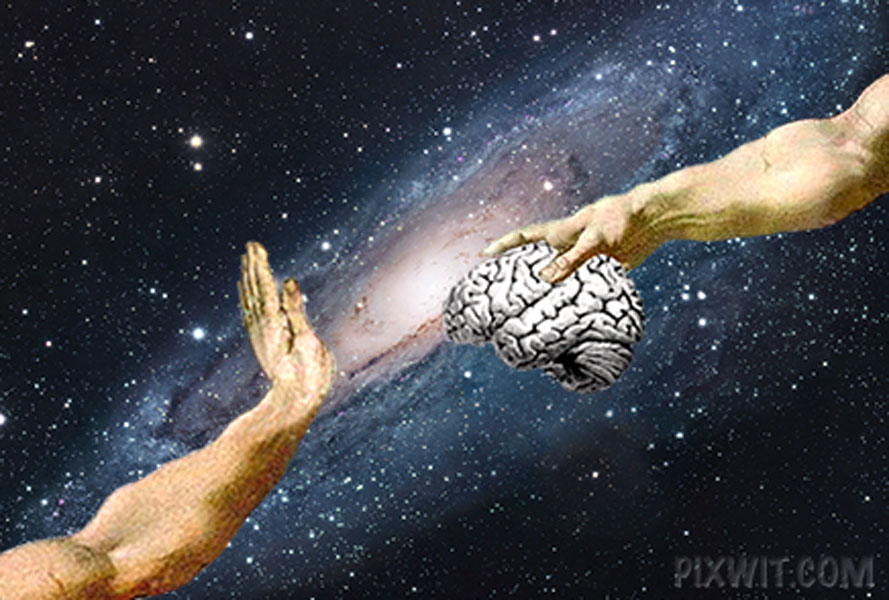
See also: Origin of language and Religion and mythology

The degree of comprehension in an animal depends upon the size of the prefrontal cortex: the greater the size of the prefrontal cortex the deeper the comprehension. The difference between the comprehension of causality by humans and chimpanzees is one of degree. Chimpanzees are also known to mourn the dead, and notice things that have only aesthetic value, like sunsets, both of which may be considered to be components of religion or spirituality. For example, chimpanzees have been known to escape from pens closed with multiple latches, which was previously thought could only have been figured out by humans who understood causality. However, recent studies of other primates indicate that causality may not be a uniquely human trait. Wolpert contends use of tools composed of more than one component, such as hand axes, represents an ability to understand cause and effect. Accordingly, the level of sophistication of stone tools is a useful indicator of causal beliefs. Furthermore, one must understand how the tool would be used, that requires an understanding of causality. The manufacture of complex tools requires creating a mental image of an object which does not exist naturally before actually making the artifact. Lewis Wolpert argues that causal beliefs that emerged from tool use played a major role in the evolution of belief. Stephen Jay Gould suggests that religion may have grown out of evolutionary changes which favored larger brains as a means of cementing group coherence among savanna hunters, after that larger brain enabled reflection on the inevitability of personal mortality. The study is based on a regression analysis of neocortex size plotted against a number of social behaviors of living and extinct hominids. His study indicates that only after the speciation event is the neocortex large enough to process complex social phenomena such as language and religion. Robin Dunbar argues that the critical event in the evolution of the neocortex took place at the speciation of archaic Homo sapiens about 500,000 years ago. In chimpanzees the neocortex occupies 50% of the brain, whereas in modern humans it occupies 80% of the brain. The neocortex size correlates with a number of social variables that include social group size and complexity of mating behaviors. According to Dunbar's theory, the relative neocortex size of any species correlates with the level of social complexity of the particular species. The cerebral neocortex is presumed to be responsible for the neural computations underlying complex phenomena such as perception, thought, language, attention, episodic memory and voluntary movement.

Much of the brain's expansion took place in the neocortex. During human evolution, the hominid brain tripled in size, peaking 500,000 years ago. In this set of theories, the religious mind is one consequence of a brain that is large enough to formulate religious and philosophical ideas. Relevant prerequisites for human religion Increased brain size

Some evidence suggests that many species grieve death and loss. Įlephants demonstrate rituals around their deceased, which include long periods of silence and mourning at the point of death and a process of returning to grave sites and caressing the remains. Other lines of evidence have revealed that Homo neanderthalensis made cave art, which would be a manner of symbolic thinking comparable to the manner required for religious thought. The use of burial rituals is thought to be evidence of religious activity, and there is no other evidence that religion existed in human culture before humans reached behavioral modernity. There is inconclusive evidence that Homo neanderthalensis may have buried their dead which is evidence of the use of ritual. These traits include high intelligence, a capacity for symbolic communication, a sense of social norms, realization of " self" of continuity. Barbara King argues that while non-human primates are not religious, they do exhibit some traits that would have been necessary for the evolution of religion. It is for this reason that chimpanzees and bonobos are viewed as the best available surrogate for this common ancestor. These primates share a common ancestor with humans who lived between six and eight million years ago.

Humanity's closest living relatives are common chimpanzees and bonobos.


 0 kommentar(er)
0 kommentar(er)
